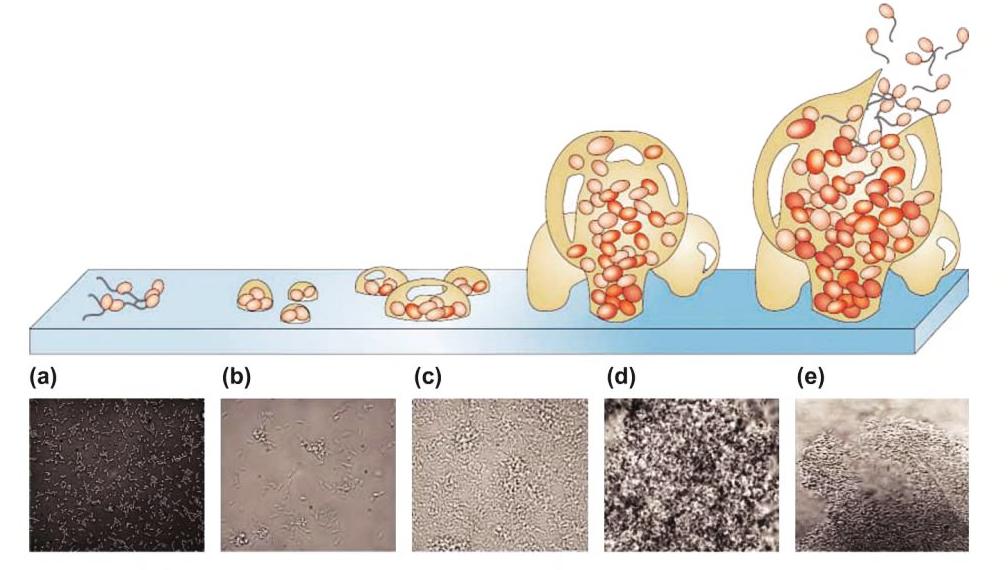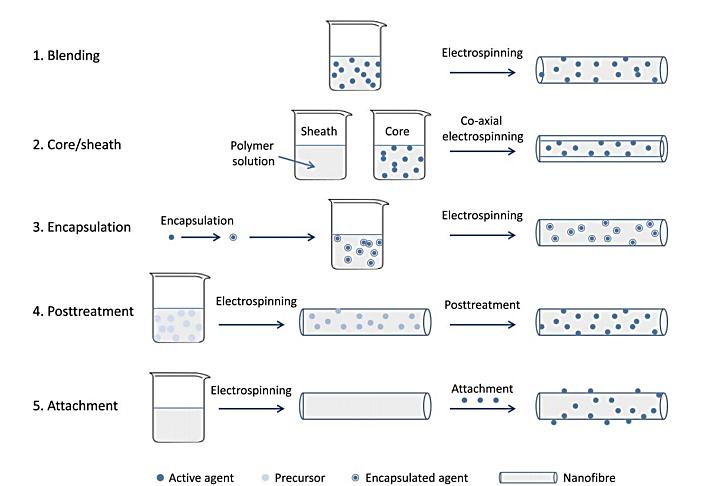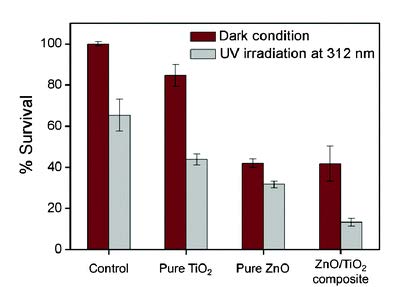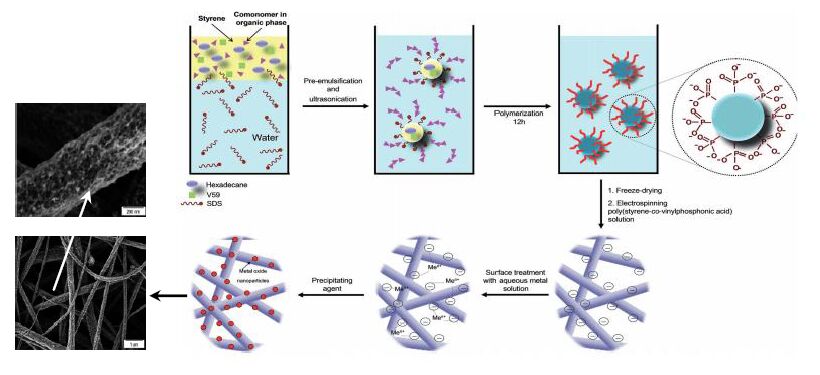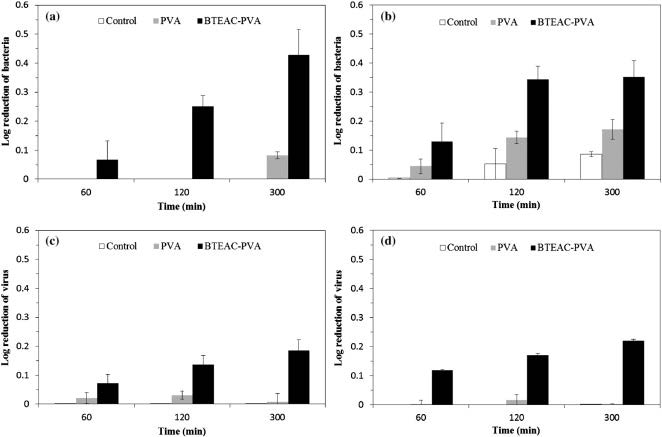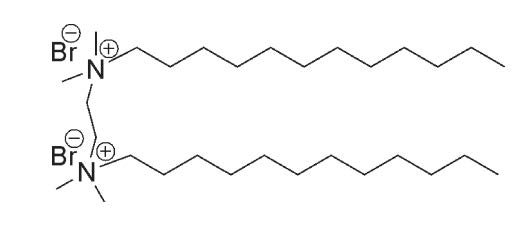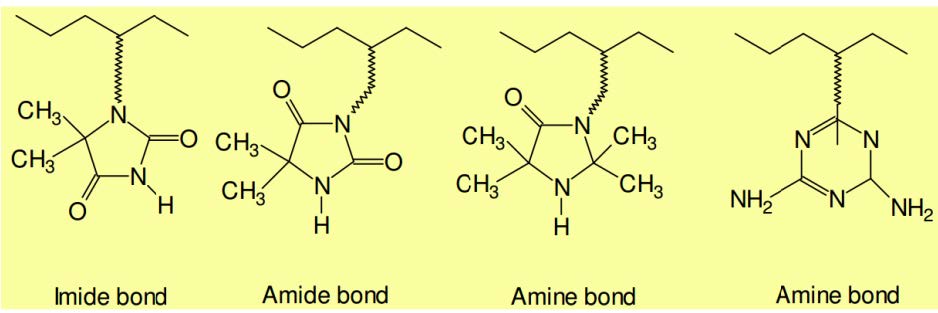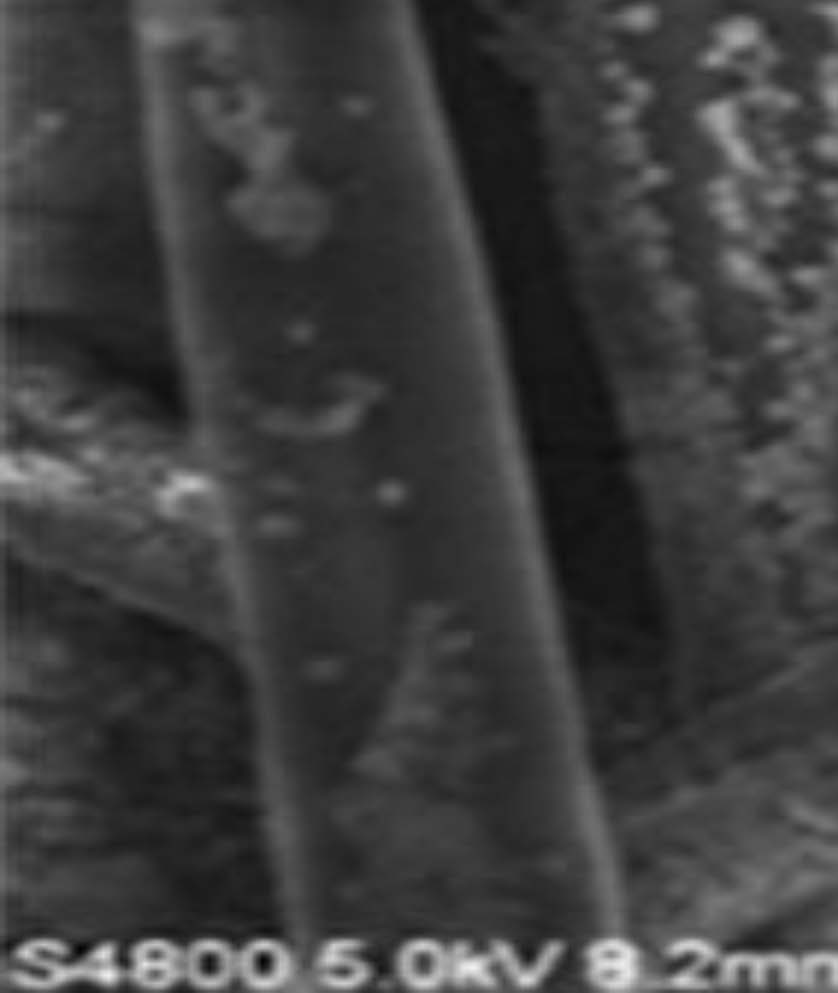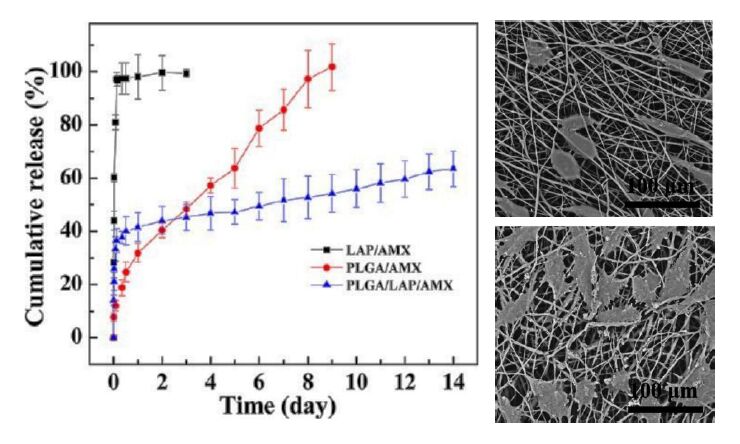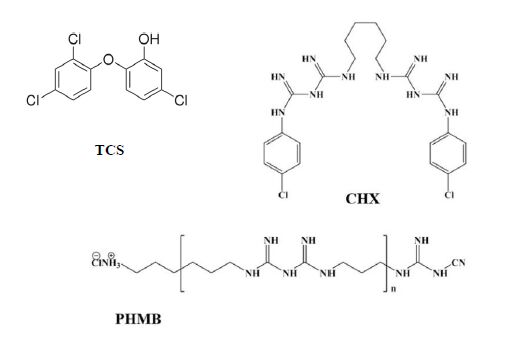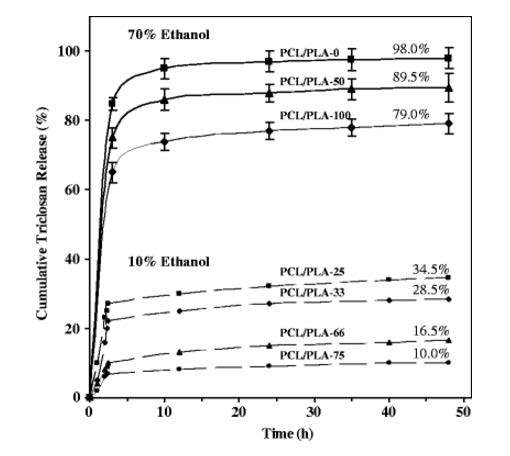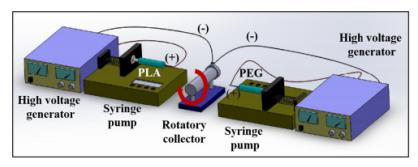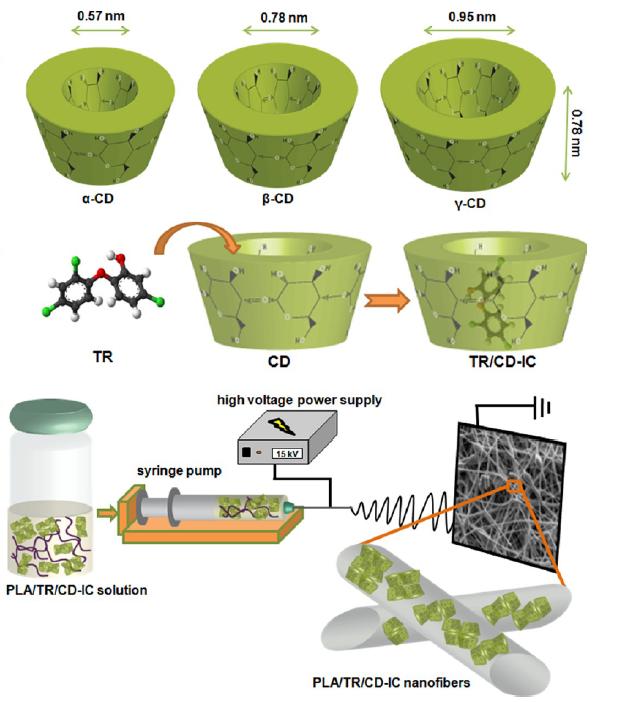Development of materials with an antimicrobial activity is fundamental for different sectors, including medicine and health care, water and air treatment, and food packaging. Electrospinning is a versatile and economic technique that allows the incorporation of different natural, industrial, and clinical agents into a wide variety of polymers and blends in the form of micro/nanofibers. Furthermore, the technique is versatile since different constructs (e.g. those derived from single electrospinning, co-electrospinning, coaxial electrospinning, and miniemulsion electrospinning) can be obtained to influence the ability to load agents with different characteristics and stability and to modify the release behaviour. Furthermore, antimicrobial agents can be loaded during the electrospinning process or by a subsequent coating process. In order to the mitigate burst release effect, it is possible to encapsulate the selected drug into inorganic nanotubes and nanoparticles, as well as in organic cyclodextrine polysaccharides. In the same way, processes that involve covalent linkage of bactericide agents during surface treatment of electrospun samples may also be considered.
The present review is focused on more recent works concerning the electrospinning of antimicrobial polymers. These include chitosan and common biodegradable polymers with activity caused by the specific load of agents such as metal and metal oxide particles, quaternary ammonium compounds, hydantoin compounds, antibiotics, common organic bactericides, and bacteriophages.
1.
Introduction
Integrable systems have been studied for over 50 years in which there is an increasing interest in acquiring the nonlocal systems of integrable equations and analyzing their solutions and properties. The pioneering work for the nonlocal integrable system has been done by Ablowitz and Musslimani [1] when they investigated the nonlocal nonlinear Schr$ \mathrm{\ddot{o}} $dinger (NLS) equation through inverse scattering transform. It should be noted that the NLS equation is parity-time-symmetric (PT-symmetry), which has become an interesting topic in quantum mechanics [2], optics [3,4,5,6] and Bose-Einstein condensates [7,8], etc. The nonlocal integrable systems are of important significance in the theoretical study of mathematical physics and applications in the fields of nonlinear science [9]. In the past few years, this research field started to attract a lot of attention [10,11,12,13,14]. For instance, Xu and Chow [15] derived the breathers and rogue waves solutions of a third order nonlocal partial differential equation by bilinear transformation. Lou [16] derived multi-place nonlocal integrable systems, especially for the two-place and four-place nonlocal NLS equations and Kadomtsev-Petviashvili (KP) equations. Chen et al. [17] collected the nonlocal NLS hierarchy, nonlocal modified Korteweg-de Vries (mKdV) hierarchy and nonlocal versions of the sine-Gordon equation in nonpotential form. Rao et al. [18,19] showed the PT-symmetric nonlocal Davey-Stewartson I equation by using the Kadomtsev-Petviashvili hierarchy reduction method. Yu and Fan [20] studied the coupled nonlocal nonlinear Schr$ \ddot{\mathrm{o}} $dinger equations with the self-induced PT-symmetric potential using the Hirota bilinear method.
The KdV equation [21,22,23] and the mKdV equation [24] describe the evolution of small amplitude and weakly dispersive waves which occur in the shallow water. The complex mKdV equation is the next member of the nonlinear Schr$ \ddot{\mathrm{o}} $dinger hierarchy, which possesses all the basic characters of integrable models. In physical application, the nonlocal mKdV possesses the shifted parity and/or delayed time reversal symmetry, and thus it could be related to the Alice-Bob system [25]. For instance, a special solution of the nonlocal mKdV was applied to theoretically capture the salient features of two correlated dipole blocking events in atmospheric and oceanic dynamical systems [26]. Since the nonlocal NLS was found, the nonlocal mKdV equation has attracted much attention. Ablowitz and Musslimani analyzed Lax pairs, conservation laws, inverse scattering transform and obtained one-soliton solutions of many nonlocal nonlinear integrable equations, such as nonlocal nonlinear Schr$ \ddot{\mathrm{o}} $dinger equation, cmKdV and mKdV equtions, sine-Gordon equation and so on [27,28]. B. Yang and J. K. Yang [29] proposed variable transformations between nonlocal and local integrable equations and derived new integrable equations. By constructing the DT for nonlocal complex mKdV equation, Ma, Shen and Zhu [30] derived dark soliton, W-type soliton, M-type soliton and periodic solutions. Li et al.[31] derived single soliton solution and two soliton solution using Hirota bilinear method for reverse space nonlocal cmKdV equation. G$ \ddot{\mathrm{u}} $rses and Pekcan [32] studied the nonlocal mKdV equations obtained from AKNS scheme by Ablowitz-Musslimani type nonlocal reductions, and found soliton solutions of the coupled mKdV system by using the Hirota bilinear method. He, Fan and Xu formulated the Riemann-Hilbert problem associated with the Cauchy problem of the nonlocal mKdV equation and applied the Deift-Zhou nonlinear steepest-descent method analyzed the long-time asymptotics for the solution of the nonlocal mKdV equation [33]. Both focusing and defocusing nonlocal (reverse-space-time) mKdV equations were studied by using inverse scattering transform in [34]. The soliton solutions of nonlocal mKdV equations are derived though inverse scattering transform in[35,36,37,38]. However, there has been still not much work on the Hirota bilinear method to three types of the nonlocal cmKdV equations. Hirota bilinear method is an important and direct method to solve integrable equations. The advantage of the Hirota bilinear method [39,40] is an algebraic rather than analytical method, and it has been successfully applied to solve a large number of soliton equations.
Based on the above mentioned works, we can structure reverse space cmKdV equation, reverse time cmKdV equation and reverse space-time cmKdV equation form classical cmKdV equation. Local cmKdV equation is given by
where $ u(x, t) $ is a complex function and $ u^*(x, t) $ is its complex conjugation, $ \sigma = \pm1 $ denote the defocusing and focusing cases.
Here we make three different variable transformations:
Then we put $ \hat{x}\rightarrow x $, $ \hat{t}\rightarrow t $, $ \hat{u}\rightarrow u $. Through these transformations, local cmKdV equation transforms into reverse space cmKdV equation, reverse time cmKdV equation and reverse space-time cmKdV equation:
These nonlocal equations are obviously different from local equations for their space and/or time coupling, which could induce new physical phenomena and thus inspire novel physical applications.
The main purpose of this work is to search for the integrability of three types nonlocal cmKdV Eqs (1.5)–(1.7) and find their soliton solutions by the Hirota bilinear method. The rest of this paper is organized as follows. We study one-soliton solution and two-soliton solution of the nonlocal mKdV equations of all types by using the improved Hirota bilinear method, and provide some figures to describe the defocusing case and focusing case of nonlocal cmKdV equations. Then we analyse the difference of nonlinear wave structure of three types equations. Moreover, by applying the transformation relationship between local and nonlocal equations, we obtain the Lax pair of nonlocal equations. Some conclusions are given in the last section.
2.
Hirota method for the reverse space cmKdV equation
The reverse space cmKdV equation is given by
where $ u = u(x, t) $ is a complex-valued function of $ x $ and $ t $, the $ * $ denotes complex conjugation.
We first present the dependent variable transformations in order to take an Hirota bilinear method [31] to Eq (2.1). The transformations are
where the $ G(x, t) $ and $ G^{*}(-x, t) $ are complex functions, the $ F(x, t) $ and $ F^{*}(-x, t) $ are also in general complex functions, and all of them are distinct.
We substitute the transformations Eq (2.2) into Eq (2.1) and introduce bilinear operators of the functions $ F $ and $ G $. We get a novel equation as follows
it can be decoupled into the following system of bilinear equations for the functions $ F $ and $ G $,
the $ D_{x} $ and $ D_{t} $ are defined as
Solving the above series of bilinear Eqs (2.4)–(2.6), and coupling with Eq (2.2), we can get some soliton solutions. In this section, we expand the unknown functions $ G(x, t) $, $ G^*(-x, t) $, $ F(x, t) $ and $ F^*(-x, t) $ in terms of a small parameter $ \epsilon $
where the $ G_1 $, $ G_3 $, $ F_2 $, $ F_4 $ are functions with spatial variable $ x $ and temporal variable $ t $, and the fuctions $ G_{1}^{*} $, $ G_{3}^{*} $, $ F_2^* $, $ F_4^* $ have variables $ -x $ and $ t $. Substituting the above expansions into Eqs (2.4)–(2.6), and comparing the coefficients of $ \epsilon $, we obtain the unknown functions $ G(x, t) $, $ G^{*}(-x, t) $, $ F(x, t) $ and $ F^{*}(-x, t) $ by selecting the appropriate functions $ G_1 $, $ G_1^{*} $, $ F_2 $, $ F_2^{*} $, $ G_3 $, $ G_3^{*} $, $ F_4 $, $ F_4^{*} $, etc.
2.1. One-soliton solution of the reverse space cmKdV equation
Now we want to find one-soliton of Eq (2.1). First of all, we take the following expansions of the functions $ G $, $ G^{*} $, $ F $ and $ F^{*} $:
Substituting the above expansions of Eq (2.9) into the bilinear Eqs (2.4)–(2.6), and comparing the coefficients of same powers of $ \epsilon $ to zero, we obtain a set of equations
where $ G_1 $, $ G_1^* $, $ F_2 $ and $ F_2^* $ are given rise to as follows
where $ \eta_1 = k_1x-\omega_1t+\eta_{10} $, $ \eta_1^* = -k_1^*x-\omega_1^*t+\eta_{10}^* $, and $ k_1 $, $ k_1^* $, $ A_1 $, $ A_1^* $ are arbitrary complex constants.
From Eqs (2.10) and (2.11), we know the relation about $ \omega_1 $, $ k_1 $ and $ A_1 $ as follows
Since the $ \omega_1^* $ is the complex conjugate of $ \omega_1 $, so
In the same way, we obtain
Then, the general nonlocal one-soliton solution of the reverse space cmKdV Eq (2.1) is
According to the bilinear form of parity transformed complex conjugate equation, the parity transformed complex conjugate field is derived in the form
Here we provide some figures to describe the nonlocal single soliton solutions Eqs (2.17) and (2.18)(see Figure 1). Figure 1(a), (b) are the profiles of focusing cmKdV equation, and Figure 1(c), (d) are the profiles of defocusing cmKdV equation with the same parameters $ \epsilon $, $ k_1 $, $ k_1^* $. Figure 1 shows that $ |u(x, t)| $ and $ |u^*(-x, t)| $ have the same shapes as spatial evolution, but their enhancing shapes are antipodal.
2.2. Two-soliton solution of the reverse space cmKdV equation
The nonlocal two-soliton solution of the reverse space cmKdV Eq (2.1) can also be obtained with Hirota bilinear method. We consider the truncating of the following expansions $ G(x, t) = \epsilon G_1+\epsilon^3G_3 $, $ G^*(-x, t) = \epsilon G^*_1+\epsilon^3G^*_3 $, $ F(x, t) = 1+\epsilon^2F_2+\epsilon^4F_4 $, $ F^*(-x, t) = 1+\epsilon^2F^*_2+\epsilon^4F^*_4 $.
Substituting these expansions into the bilinear Eqs (2.4)–(2.6), and collecting the coefficients of same powers of $ \epsilon $ to zero, we obtain a set of equations
where $ G_1 $, $ G_1^* $, $ F_2 $ and $ F_2^* $ are given rise to as follows
where $ \eta_1 = k_1x-\omega_1t+\eta_{10} $, $ \eta_1^* = -k_1^*x-\omega_1^*t+\eta_{10}^* $, $ \eta_2 = k_2x-\omega_2t+\eta_{20} $, $ \eta_2^* = -k_2^*x-\omega_2^*t+\eta_{20}^* $. And $ k_1 $, $ k_1^* $, $ k_2 $, $ k_2^* $, $ A_1 $, $ A_1^* $, $ A_2 $, $ A_2^* $, $ A_3 $, $ A_3^* $, $ A_4 $, $ A_4^* $ are arbitrary complex constants.
From Eqs (2.19) and (2.21), we know
and
So, the functions $ G_1(x, t) $, $ G_1^{*}(-x, t) $, $ F_2(x, t) $ and $ F_2^{*}(-x, t) $ are obtained. Substituting the expressions of $ G_1 $ and $ F_2 $ into the Eq (2.20), we obtain the function $ G_3 $ and the parity transformed complex conjugate $ G_3^* $ in the form
where
and
Then we substitute the expressions for $ G_1 $, $ G_1^* $, $ G_3 $, $ G_3^* $, $ F_2 $ and $ F_2^* $ into the Eq (2.22) and obtain the functions $ F_4 $ and $ F_4^* $ as follows
where
In $ C_5 $, $ a_1 $, $ a_2 $, $ a_3 $, $ a_4 $ are denoted as follows
and
In $ C_5^* $, $ a_1^* $, $ a_2^* $, $ a_3^* $, $ a_4^* $ are denoted as follows
So, the general nonlocal two-soliton solution of the reverse space cmKdV Eq (2.1) is
According to the bilinear form of parity transformed complex conjugate equation, the parity transformed complex conjugate field is derived in the form
Here we provide some figures to describe the nonlocal two-soliton solutions Eqs (2.30) and (2.31) of the reverse space cmKdV Eq (2.1), see Figures 2 and 3. In Figure 2, the focusing and defocusing cmKdV equations have entirely different solitary wave structure with the same parameters $ \epsilon = 1 $, $ k_1 = 0.7+0.7i $, $ k_2 = -0.64-0.8i $, which are novel phenomenon in nonlocal cmKdV equation. Profiles Figure 2(a), (b) present the breather-like style only in the vicinity of $ t = 0 $. Profiles Figure 2(c), (d) show the elastic interactions between two bright-bright solitons with different amplitudes. When the time $ t $ is near zero, amplitudes of the two solitary waves reach maximum, while the widths reach the minimum. Figure 3 shows the collision interactions between two breathers with parameters $ \epsilon = 1 $, $ k_1 = 0.2+0.7i $, $ k_2 = -0.7-0.8i $. The focusing and defocusing cmKdV equations have the same solitary wave structure, but with different amplitudes. The profiles of $ u(x, t) $ and $ u^*(-x, t) $ are on $ x $-axis symmetric.
3.
Hirota method for the reverse time cmKdV equation
The reverse time cmKdV equation is given by
where $ u = u(x, t) $ is a complex-valued function of $ x $ and $ t $, the $ * $ denotes complex conjugation.
We present the dependent variable transformations which is similar to the previous section in order to take an Hirota bilinear method to Eq (3.1). The transformations are
where the $ G(x, t) $, $ G^{*}(x, -t) $, $ F(x, t) $ and $ F^{*}(x, -t) $ are complex functions, and all of them are distinct.
Substituting the transformations Eq (3.2) into Eq (3.1) and introducing bilinear operators of the functions $ f $ and $ g $, we get a novel equation as follows
it can be decoupled into the following system of bilinear equations for the functions $ F $ and $ G $,
the $ D_{x} $ and $ D_{t} $ are defined as same as in the previous section. Solving the above series of bilinear Eqs (3.4)–(3.6) and coupling with Eq (3.2), some soliton solutions can be obtained.
We expand the unknown functions $ G(x, t) $, $ G^{*}(x, -t) $, $ F(x, t) $ and $ F^{*}(x, -t) $ in terms of a small parameter $ \epsilon $
where the $ G_1 $, $ G_3 $, $ F_2 $, $ F_4 $ are functions with spatial variable $ x $ and temporal variable $ t $, the functions $ G_{1}^{*} $, $ G_{3}^{*} $, $ F_2^* $, $ F_4^* $ have variables $ x $ and $ -t $. Substituting the above expansions into Eqs (3.4)–(3.6), and comparing the coefficients of $ \epsilon $, we obtain the unknown functions $ G(x, t) $, $ G^{*}(x, -t) $, $ F(x, t) $ and $ F^{*}(x, -t) $ by selecting the appropriate functions $ G_1 $, $ G_1^{*} $, $ F_2 $, $ F_2^{*} $, $ G_3 $, $ G_3^{*} $, $ F_4 $, $ F_4^{*} $, etc.
3.1. One-soliton solution of the reverse time cmKdV equation
For one-soliton of Eq (3.1), we take the following expansions of the functions $ G $, $ G^{*} $, $ F $ and $ F^{*} $:
Substituting the above expansions of Eq (3.8) into the bilinear Eqs (3.4)–(3.6), and comparing the coefficients of same powers of $ \epsilon $ to zero, we obtain a set of equations
where $ G_1 $, $ G_1^* $, $ F_2 $ and $ F_2^* $ are given rise to as follows
where $ \xi_1 = k_1x-\omega_1t+\xi_{10} $, $ \xi_1^* = k_1^*x+\omega_1^*t+\xi_{10}^* $, and $ k_1 $, $ k_1^* $, $ A_1 $, $ A_1^* $ are arbitrary complex constants.
From Eqs (3.9) and (3.10), we know the relation about $ \omega_1 $, $ k_1 $ and $ A_1 $ as follows
Since the $ \omega_1^* $ is the complex conjugate of $ \omega_1 $, so
In the same way, we have
So, the general nonlocal one-soliton solution of the reverse space cmKdV Eq (3.1) is
According to the bilinear form of parity transformed complex conjugate equation, the parity transformed complex conjugate field is derived in the form
The figures of nonlocal single soliton solutions Eqs (3.16) and (3.17) of the reverse time cmKdV equation Eq (3.1) are given in Figure 4. The results show that the defocusing and focusing cmKdV equations have the same solitary wave structure and enhancing shape as time envolution. However, they have different wavelengths. The wavelength of focusing cmKdV equation is longer than the defocusing one with the same parameters $ \epsilon, k_1, k_1^* $.
3.2. Two-soliton solution of the reverse time cmKdV equation
The nonlocal two-soliton solution of the reverse time cmKdV Eq (3.1) can also be obtained with Hirota bilinear method. We consider the truncating of the following expansions $ G(x, t) = \epsilon G_1+\epsilon^3G_3 $, $ G^*(x, -t) = \epsilon G^*_1+\epsilon^3G^*_3 $, $ F(x, t) = 1+\epsilon^2F_2+\epsilon^4F_4 $, $ F^*(x, -t) = 1+\epsilon^2F^*_2+\epsilon^4F^*_4 $.
Substituting these expansions into the bilinear Eqs (3.4)–(3.6), and collecting the coefficients of same powers of $ \epsilon $ to zero, we obtain a set of equations
where $ G_1 $, $ G_1^* $, $ F_2 $ and $ F_2^* $ are given rise to as follows
where $ \xi_1 = k_1x-\omega_1t+\xi_{10} $, $ \xi_1^* = k_1^*x+\omega_1^*t+\xi_{10}^* $, $ \xi_2 = k_2x-\omega_2t+\xi_{20} $, $ \xi_2^* = k_2^*x+\omega_2^*t+\xi_{20}^* $. And $ k_1 $, $ k_1^* $, $ k_2 $, $ k_2^* $, $ A_1 $, $ A_1^* $, $ A_2 $, $ A_2^* $, $ A_3 $, $ A_3^* $, $ A_4 $, $ A_4^* $ are arbitrary complex constants.
From Eqs (3.18) and (3.20), we know
and
So, the functions $ G_1(x, t) $, $ G_1^{*}(x, -t) $, $ F_2(x, t) $ and $ F_2^{*}(x, -t) $ are obtained. Substituting the expressions of $ G_1 $ and $ F_2 $ into Eq (3.19), we obtain the function $ G_3 $ and the parity transformed complex conjugate $ G_3^* $ in the form
where
and
Then we substitute the expressions for $ G_1 $, $ G_1^* $, $ G_3 $, $ G_3^* $, $ F_2 $ and $ F_2^* $ into the Eq (3.21) and obtain the functions $ F_4 $ and $ F_4^* $ as follows
where
In $ C_5 $, $ b_1 $, $ b_2 $, $ b_3 $, $ b_4 $ are denoted as follows
and
In $ C_5^* $, $ b_1^* $, $ b_2^* $, $ b_3^* $, $ b_4^* $ are denoted as follows
So, the general nonlocal two-soliton solution of the reverse time cmKdV Eq (3.1) is
According to the bilinear form of parity transformed complex conjugate equation, the parity transformed complex conjugate field is derived in the form
The figures of the nonlocal two-soliton solutions Eqs (3.29) and (3.30) of the reverse time cmKdV Eq (3.1) are given in Figures 5 and 6. Figure 5 shows $ X $-type with longer stem interaction of two breather. In near the origin, the focusing cmKdV equation is triple parallel breather wave structure, while the defocusing cmKdV equation is double parallel breather wave structure. The profiles of $ u(x, t) $ and $ u^*(x, -t) $ of defocusing and focusing cmKdV equations have opposite wave structure with time envolution, but they are all symmetric about the $ t $-axis. From Figure 6, we see that the $ H $-type interaction between two breather wave of defocusing and focusing cmKdV equations has different amplitudes, and the amplitudes reach zero in the vicinity of the crossing point.
4.
Hirota method for the reverse space-time cmKdV equation
The reverse space-time cmKdV equation is given by
where $ u = u(x, t) $ is a complex-valued function of $ x $ and $ t $, the $ * $ denotes complex conjugation.
We first present the dependent variable transformations in order to take an Hirota bilinear method to Eq (4.1). The transformations are
where the $ G(x, t) $ and $ G^{*}(-x, -t) $ are complex functions, the $ F(x, t) $ and $ F^{*}(-x, -t) $ are also in general complex functions, and all of them are distinct.
Substituting the transformations Eq (4.2) into Eq (4.1) and introducing bilinear operators of the functions $ F $ and $ G $, we get a novel equation as follows
it can be decoupled into the following system of bilinear equations for the functions $ F $ and $ G $,
the $ D_{x} $ and $ D_{t} $ are defined as same as the Section 2. Solving the above series of bilinear Eqs (4.4)–(4.6) and coupling with Eq (4.2), the soliton solutions can be obtained.
We expand the unknown functions $ G(x, t) $, $ G^*(-x, -t) $, $ F(x, t) $ and $ F^*(-x, -t) $ in terms of a small parameter $ \epsilon $
where the $ G_1 $, $ G_3 $, $ F_2 $, $ F_4 $ are functions with spatial variable $ x $ and temporal variable $ t $, the functions $ G_{1}^{*} $, $ G_{3}^{*} $, $ F_2^* $, $ F_4^* $ have variables $ -x $ and $ -t $. Substituting the above expansions into Eqs (4.4)–(4.6), and comparing the coefficients of $ \epsilon $, we obtain the unknown functions $ G(x, t) $, $ G^{*}(-x, -t) $, $ F(x, t) $ and $ F^{*}(-x, -t) $ by selecting the appropriate functions $ G_1 $, $ G_1^{*} $, $ F_2 $, $ F_2^{*} $, $ G_3 $, $ G_3^{*} $, $ F_4 $, $ F_4^{*} $, etc.
4.1. One-soliton solution of the reverse space-time cmKdV equation
In this section, one-soliton of Eq (4.1) can be obtained with Hirota bilinear method. First of all, we take the following expansions of the functions $ G $, $ G^{*} $, $ F $ and $ F^{*} $:
Substituting the above expansions of Eq (4.8) into the bilinear Eqs (4.4)–(4.6), and comparing the coefficients of same powers of $ \epsilon $ to zero, we obtain a set of equations
where $ G_1 $, $ G_1^* $, $ F_2 $ and $ F_2^* $ are given rise to as follows
where $ \zeta_1 = k_1x-\omega_1t+\zeta_{10} $, $ \zeta_1^* = -k_1^*x+\omega_1^*t+\zeta_{10}^* $, and $ k_1 $, $ k_1^* $, $ A_1 $, $ A_1^* $ are arbitrary complex constants.
From Eqs (4.9) and (4.10), we know the relation about $ \omega_1 $, $ k_1 $ and $ A_1 $ as follows
Since the $ \omega_1^* $ is the complex conjugate of $ \omega_1 $, so
In the same way, we can get
Then, the general nonlocal one-soliton solution of the reverse space-time cmKdV Eq (4.1) is
According to the bilinear form of parity transformed complex conjugate equation, the parity transformed complex conjugate field is derived in the form
Here we provide some figures to describe the nonlocal single soliton solutions Eqs (4.16) and (4.17) of the reverse space-time cmKdV Eq (4.1) in the Figure 7. The results show that the solutions of focusing and defocusing nonlocal cmKdV equations are periodic, but the crests and troughs are located in different places, and $ u(x, t) $ and $ u^*(-x, -t) $ have the opposite enhancing directions as time envolution.
4.2. Two-soliton solution of the reverse space-time cmKdV equation
The nonlocal two-soliton solution of the reverse space-time cmKdV Eq (4.1) can also be obtained with Hirota bilinear method. We consider the truncating of the following expansions $ G(x, t) = \epsilon G_1+\epsilon^3G_3 $, $ G^*(-x, -t) = \epsilon G^*_1+\epsilon^3G^*_3 $, $ F(x, t) = 1+\epsilon^2F_2+\epsilon^4F_4 $, $ F^*(-x, -t) = 1+\epsilon^2F^*_2+\epsilon^4F^*_4 $.
Substituting these expansions into the bilinear Eqs (4.4)–(4.6), and collecting the coefficients of same powers of $ \epsilon $ to zero, we obtain a set of equations
where $ G_1 $, $ G_1^* $, $ F_2 $ and $ F_2^* $ are given rise to as follows
where $ \zeta_1 = k_1x-\omega_1t+\zeta_{10} $, $ \zeta_1^* = -k_1^*x+\omega_1^*t+\zeta_{10}^* $, $ \zeta_2 = k_2x-\omega_2t+\zeta_{20} $, $ \zeta_2^* = -k_2^*x+\omega_2^*t+\zeta_{20}^* $. And $ k_1 $, $ k_1^* $, $ k_2 $, $ k_2^* $, $ A_1 $, $ A_1^* $, $ A_2 $, $ A_2^* $, $ A_3 $, $ A_3^* $, $ A_4 $, $ A_4^* $ are arbitrary complex constants.
From Eqs (4.18) and (4.20), we know
So the functions $ G_1(x, t) $, $ G_1^{*}(-x, -t) $, $ F_2(x, t) $ and $ F_2^{*}(-x, -t) $ are obtained. When we substitute the expressions of $ G_1 $ and $ F_2 $ into Eq (4.19), and obtain the function $ G_3 $ and the parity transformed complex conjugate $ G_3^* $ in the form
where
and
Substituting the expressions of $ G_1 $, $ G_1^* $, $ G_3 $, $ G_3^* $, $ F_2 $ and $ F_2^* $ into Eq (4.21), we obtain the functions $ F_4 $ and $ F_4^* $ as follows
where
In $ C_5 $, $ c_1 $, $ c_2 $, $ c_3 $, $ c_4 $ are denoted as follows
and
In $ C_5^* $, $ c_1^* $, $ c_2^* $, $ c_3^* $, $ c_4^* $ are denoted as follows
Then, the general nonlocal two-soliton solution of the reverse space-time cmKdV Eq (4.1) is
According to the bilinear form of parity transformed complex conjugate equation, the parity transformed complex conjugate field is derived in the form
The figures of nonlocal two-soliton solutions Eqs (4.28) and (4.29) of the reverse space-time cmKdV Eq (4.1) are given in Figure 8. The results show that focusing and defocusing nonlocal cmKdV equations have different characteristics of solitary wave structure with the same parameters $ \epsilon = 1 $, $ k1 = 0.7+0.7i $, $ k_2 = -0.64-0.8i $. The solution $ u(x, t) $ and $ u^*(-x, -t) $ of focusing cmKdV equations exhibit the periodic oscillations with exponential growth, while the defocusing ones show twisted solitons.
5.
The integrability of the nonlocal cmKdV equations
The local cmKdV Eq (1.1) is integrabel, which has the Lax pair as follows
and
The compatibility condition of the Lax pair, that is zero curvature equation $ M_t-N_x+[M, N] = 0 $, leads to Eq (1.1). These transformations Eqs (1.2)–(1.4) allow us to derive the Lax pair of the nonlocal equations from those of the local ones. The Lax pair of reverse space cmKdV Eq (1.5) as
and
The Lax pair of reverse time cmKdV Eq (1.6) as
and
The Lax pair of reverse space-time cmKdV Eq (1.7) as
and
The transformation relationship between local and nonlocal equations provides an effective method for us to study nonlocal equations. In fact, given the solutions of local equations, the solutions of nonlocal counterparts can be derived from the principle. However, if not, then the solutions of nonlocal equations may be derive desired solutions by other methods.
6.
Conclusions
In this paper, three types of nonlocal cmKdV equation were converted from local cmKdV equation. A variety of exact solutions are derived via constructing an improved Hirota bilinear method. We obtained various kinds of solitary waves by choosing appropriate parameters. The figures of the one- and two-soliton solutions of the reverse space cmKdV equation (see Figures 1 and 3), the reverse time cmKdV equation (see Figures 4–6) and the reverse space-time cmKdV equation(see Figures 7 and 8) shown the difference between defocusing case and focusing case. Furthermore, the Lax integrability of three types of nonlocal cmKdV equations are investigated using variable transformations from local equation. It should be pointed out that through the variable transformations, many integrable nonlocal equations can be converted from local equations. These results obtained in this paper might be useful to comprehend some physical phenomena and inspire some novel physical applications.
Acknowledgements
This work is supported by the National Natural Science Foundation of China (Nos. 11905013 and 11772063), Qin Xin Talents Cultivation Program of Beijing Information Science and Technology University (QXTCP C202118), the Scientific Research Common Program of Beijing Municipal Commission of Education under Grant (No. KM201911232011).
Conflict of interest
The authors declare no conflict of interest.










 DownLoad:
DownLoad:









